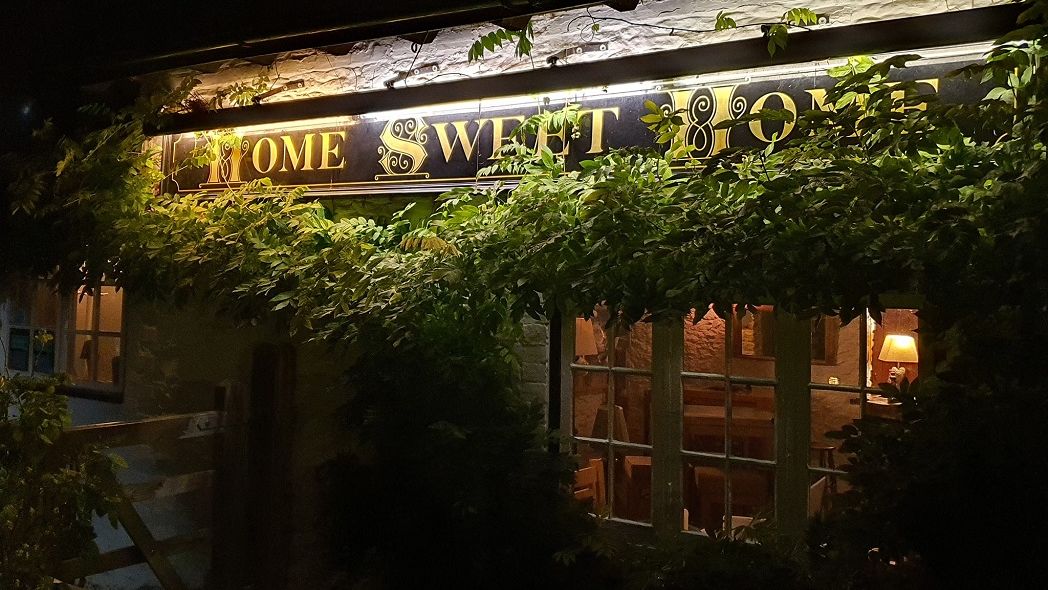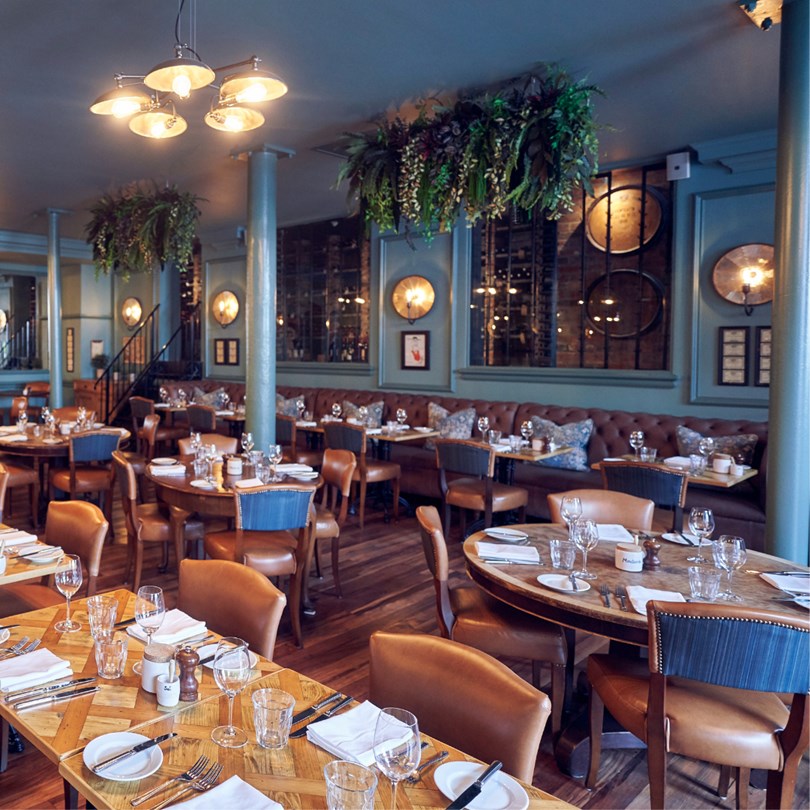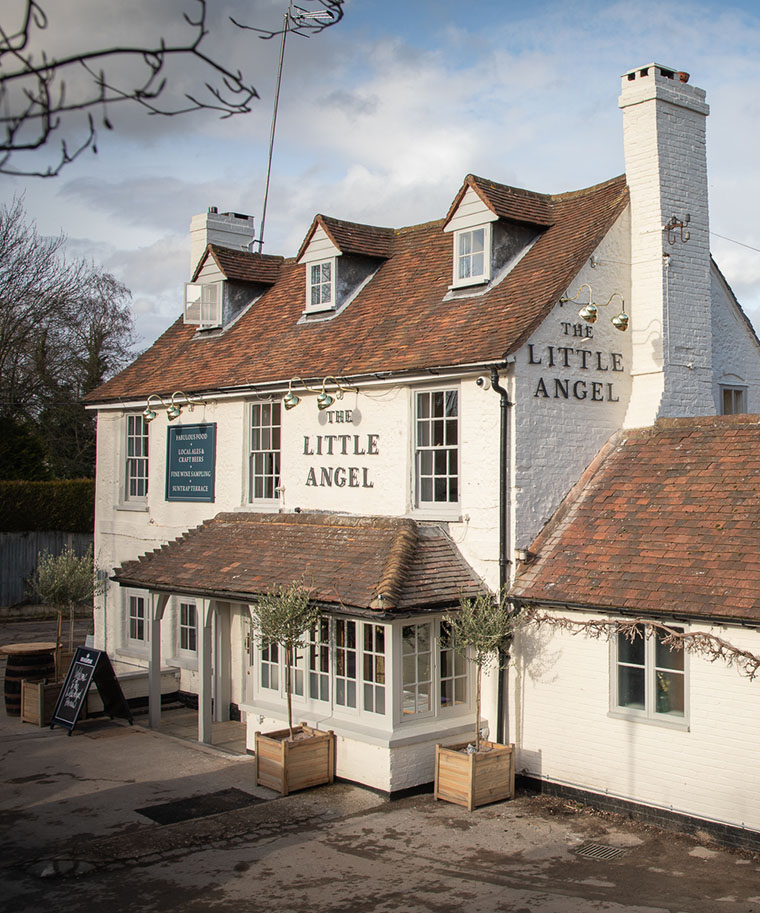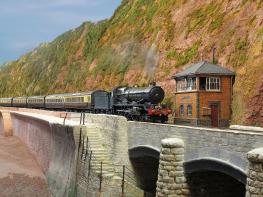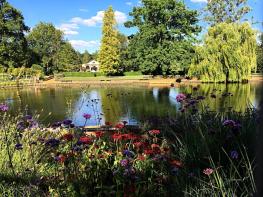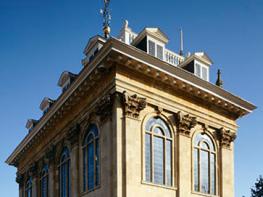Old world charm and modern facilities merge seamlessly in this former coaching inn. Bedrooms in…
Wallingford

3 miles (4.8kms)
About the walk
Wallingford is one of those towns that can hold your attention for hours. Its churches are well worth a look, its museum and Town Hall attract many visitors, and the grass-covered mounds of its ruined castle serve as a reminder of the bitter struggle for supremacy during the Civil War. Wallingford has even made guest appearances in television drama such as the town of Cawston in the popular thriller series Midsomer Murders. Scenes were filmed in the Market Place.
Turning the pages of history, you’ll find Wallingford was once acknowledged as an important river crossing, and in the 11th century William the Conqueror deemed a large castle was necessary to protect it. William crossed the Thames here in 1066 and today the river is spanned by a splendid 900ft-long (274m) bridge of 16 arches. The castle was the last Royalist stronghold in Oxfordshire to surrender, following a brave Parliamentary siege that lasted 65 days. Cromwell ordered it to be demolished six years later.
Elsewhere, there is much to see. The Town Hall is one of Wallingford’s finest buildings. Resting on pillars, it houses the tourist information centre. Inside the Town Hall are portraits by Lawrence and Gainsborough, as well as a silver mace and the 15th-century town seal. In front of the building is a striking war memorial, unveiled in 1921.
Across the road is the 19th-century Corn Exchange, now a theatre. Look for the Victorian drinking fountain at the northern end of the Market Place, given to Wallingford by Alderman Hawkins. No visit to Wallingford is complete without a look at its churches (the town once had 16). One of the most striking of these is the now redundant St Peter’s Church with its needle-like spire. The church contains the tomb of Sir William Blackstone (1723-80), Oxford’s first professor of English law, who presented St Peter’s with a clock from Horse Guards in London.
Not far away, along Thames Street, and defining the southeast corner of the old Saxon walled town, is St Leonard’s Church. The churchyard, which has been managed by a wildlife conservation group since 1996, is a haven for wildlife in an urban setting. To facilitate improved conservation, the churchyard has been divided into various areas, each with its own distinct environmental features. It’s worth allowing time to stroll through the churchyard, which you pass towards the end of the walk, as it reveals a variety of habitats and wildlife surprises.
Walk directions
On leaving the car park turn left and walk along St George’s Road. Turn left into High Street and head towards Wallingford town centre. Pass the library and Wallingford Museum and keep ahead to the junction with St Martin’s Street and Castle Street. The Town Hall is on the right and the remains of the castle on the left. Continue over the junction and pass Lamb Arcade and The George Hotel. On the right is the spire of St Peter’s Church in Thames Street.
Pass The Boat House and cross the bridge over the Thames. Continue along the road and, about 80yds (73m) beyond the traffic lights, turn right at a bridleway signposted ‘Ridgeway and Grim’s Ditch’. Follow the enclosed track between fences, keeping the river and adjacent meadows to your right. Keep left at a waymark and stay on the bridleway. Cross a footpath and now the woodland gives way to open fields.
On reaching a junction with a concrete farm track, turn right and head towards the buildings of Newnham Farm. Keep left and walk along the track to St Mary’s Church at Newnham Murren. With the church on your right, continue on the tree-lined bridleway. Approaching the A4130, veer right at the ‘cyclists dismount’ sign and follow the pavement along to a bridge over the Thames. Once over the bridge, veer right and follow the tarmac path down the bank to the riverside.
Turn left, soon fenced beside pastures. Note flood levels marked on the side of the 1913 Thames Conservancy house. Pass on through gardens and pass a boathouse. The path becomes a tarmac drive between houses. Just 10yds (9m) beyond a property called The Boathouse turn right through an archway to the road by St Leonard’s Church. Turn right for 400yds (366m), going through a ‘no entry’ sign and following ‘Thames Path’ signs to St Peter’s Street, just before the main road. Turn left here, then left again into Wood Street. After 70yds (64m) turn right into a narrow alleyway called Mousey Lane and make for the Town Hall, turn right along St Martin’s Street then left at the High Street and back to George Street and the start.
Additional information
Bridleways, pavements, Thames Path, many stiles
Flat farmland by Thames
Mostly on lead or under strict control; on short lead at nature reserve
OS Explorer 171 Chiltern Hills West
Long-stay car park in St George's Road, Wallingford (pay and display)
Off High Street in Wallingford
WALKING IN SAFETY
Read our tips to look after yourself and the environment when following this walk.
Find out more
Also in the area
About the area
Discover Oxfordshire
Located at the heart of England, Oxfordshire enjoys a rich heritage and surprisingly varied scenery. Its landscape encompasses open chalk downland and glorious beechwoods, picturesque rivers and attractive villages set in peaceful farmland. The countryside in the northwest of Oxfordshire seems isolated by comparison, more redolent of the north of England, with its broad views, undulating landscape and dry-stone walls. The sleepy backwaters of Abingdon, Wallingford, Wantage, Watlington and Witney reveal how Oxfordshire’s old towns evolved over the centuries, while Oxford’s imposing streets reflect the beauty and elegance of ‘that sweet city with her dreaming spires.’ Fans of the fictional sleuth Inspector Morse will recognise many Oxford landmarks described in the books and used in the television series.
The county demonstrates how the strong influence of humans has shaped this part of England over the centuries. The Romans built villas in the pretty river valleys that thread their way through Oxfordshire, the Saxons constructed royal palaces here, and the Normans left an impressive legacy of castles and churches. The philanthropic wool merchants made their mark too, and many of their fine buildings serve as a long-lasting testimony to what they did for the good of the local community.
Nearby stays
Restaurants and Pubs
Nearby experiences
Recommended things to do
Why choose Rated Trips?
Your trusted guide to rated places across the UK
The best coverage
Discover more than 15,000 professionally rated places to stay, eat and visit from across the UK and Ireland.
Quality assured
Choose a place to stay safe in the knowledge that it has been expertly assessed by trained assessors.
Plan your next trip
Search by location or the type of place you're visiting to find your next ideal holiday experience.
Travel inspiration
Read our articles, city guides and recommended things to do for inspiration. We're here to help you explore the UK.

